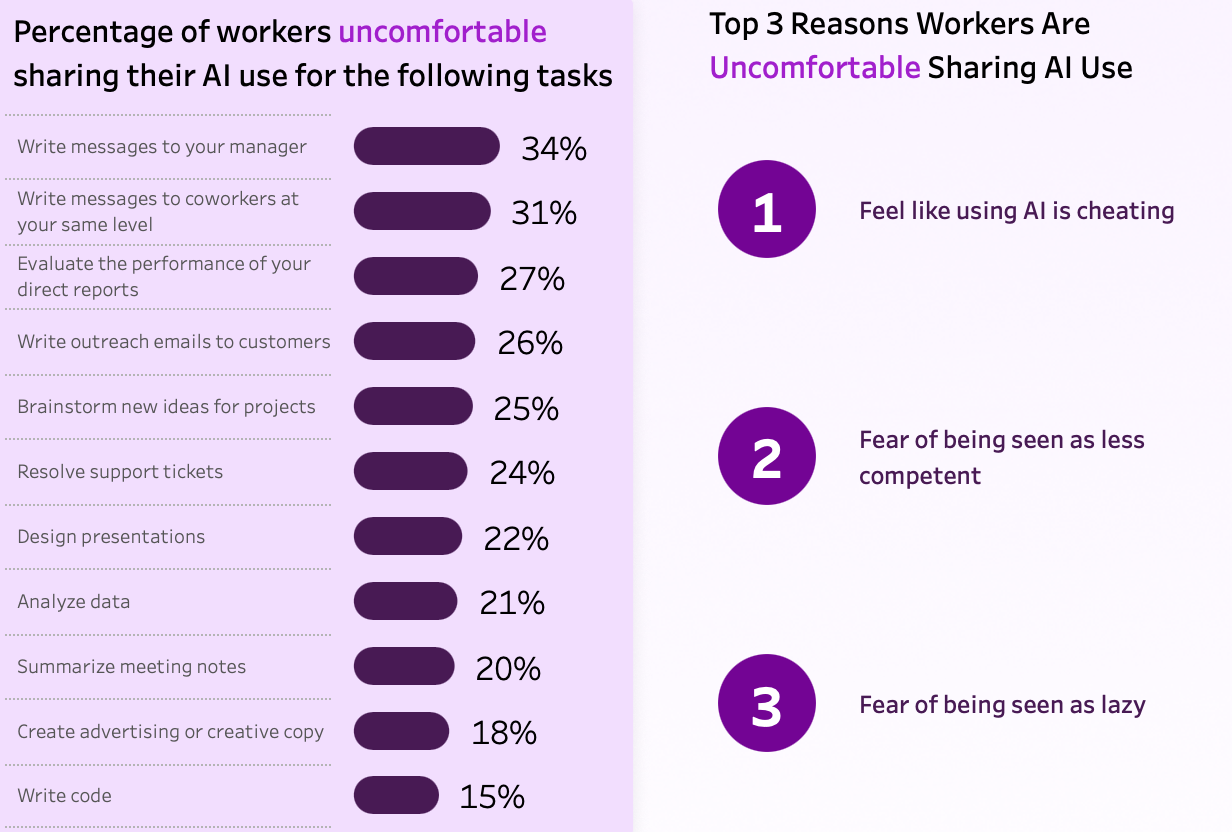Navigating AI in the Workplace: Insights from Slack’s Fall 2024 Workforce Index
Slack’s Fall 2024 Workforce Index provides fascinating insights into the evolving relationship between AI and the workplace. While the hype around AI is cooling, there’s still a lot to unpack—and it’s clear that organisations need to address AI change management head-on.
Here are my key takeaways from the report and thoughts on what organisations should be doing:
Change Management Around AI Isn’t Working
Employees remain unsure about what they can and can’t use AI for in their roles. This uncertainty breeds hesitation and inconsistency, which can hold back the productivity gains AI promises.
Action:
Be clear about AI policies and establish governance. Define which tools can be used, for what purposes, and where the limits lie.
The Stigma Around AI Usage
A surprising finding: there’s still a stigma associated with using AI to get work done. Some employees fear that relying on AI may make them appear less capable or even replaceable.
Action:
Normalise the use of AI for grunt work. Make it clear that leveraging AI isn’t “cheating”—it’s working smarter. However, highlight the importance of maintaining the quality and human touch that makes outputs unique.
Executive Focus: Investing in AI for Operational Efficiency
Executives see the potential in AI to enhance business operations. It’s their top priority when it comes to AI investment, but this enthusiasm doesn’t always trickle down to the workforce in meaningful ways.
Action:
Invest in both technology and training. Ensure employees understand how AI can make their roles easier without diminishing their value.
How to Build a Culture of AI Acceptance
To embrace AI effectively, organisations need to address both tools and culture. Here’s a simple framework:
Set Up an AI Governance Team
Keep a register of approved AI tools and define their appropriate use cases.
Educate Your Workforce
Provide training to show employees where AI fits into their workflows.
Reinforce that AI is a tool to enhance productivity, not a replacement for their skills.
Embrace Experimentation
Create a suggestion box for employees to recommend tools or processes that could benefit from AI.
Don’t shy away from running small experiments to see what works.
Combat Shadow AI
Without clear policies, employees will turn to unapproved tools, creating “Shadow AI” in your organisation. Proactively manage this by being transparent and inclusive about AI adoption.
The Bottom Line
AI is here to stay, and it’s already reshaping the workplace. Organisations that openly accept this, implement clear governance, and foster a culture of learning and experimentation will reap the benefits.
If you’re not managing AI adoption, it’s managing you.

